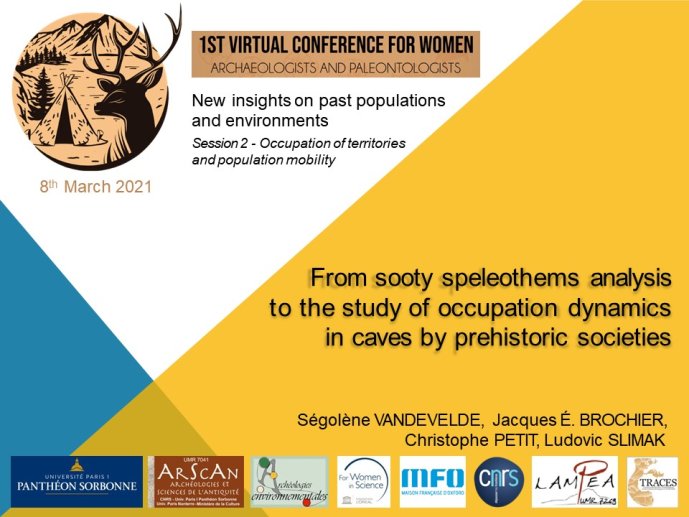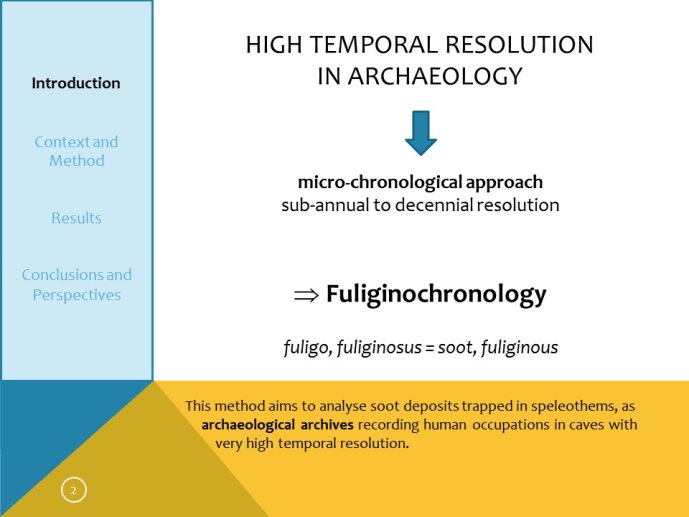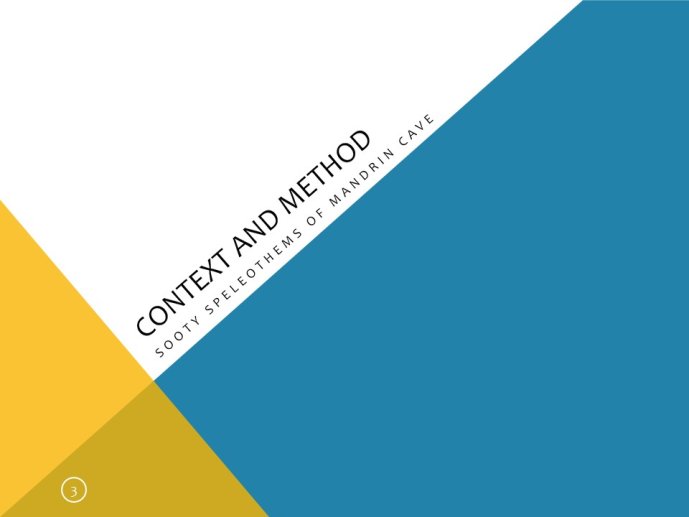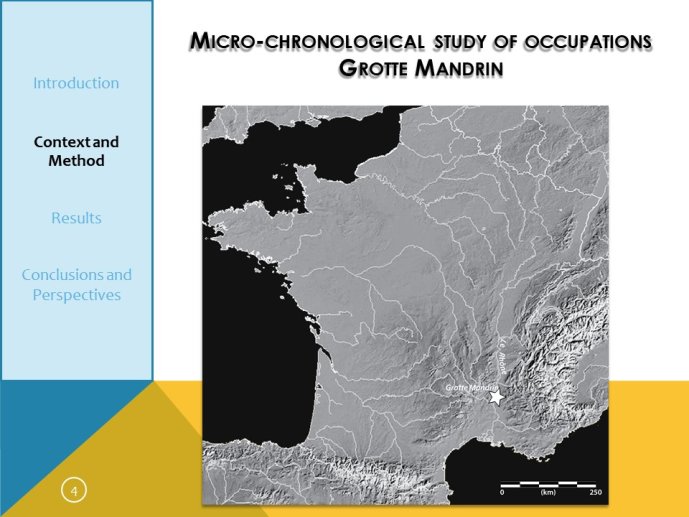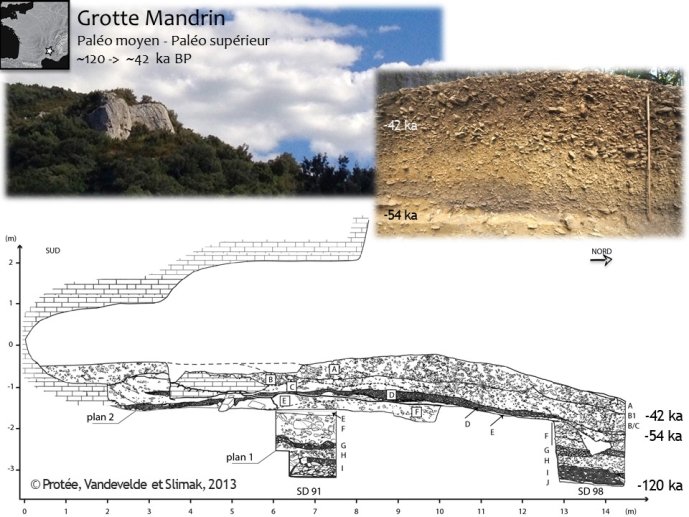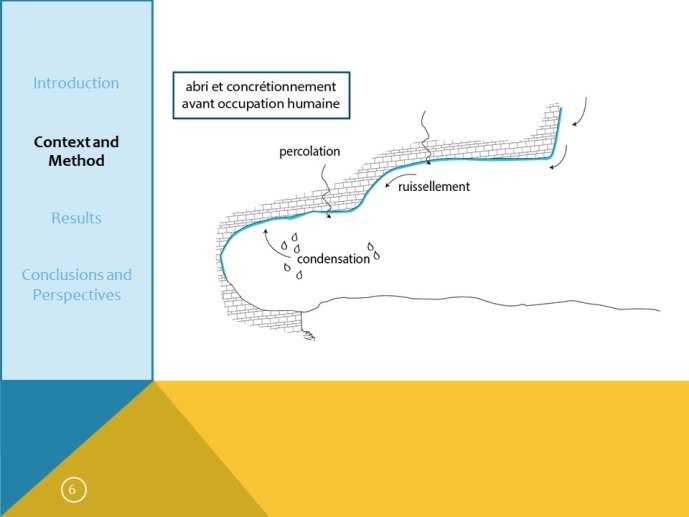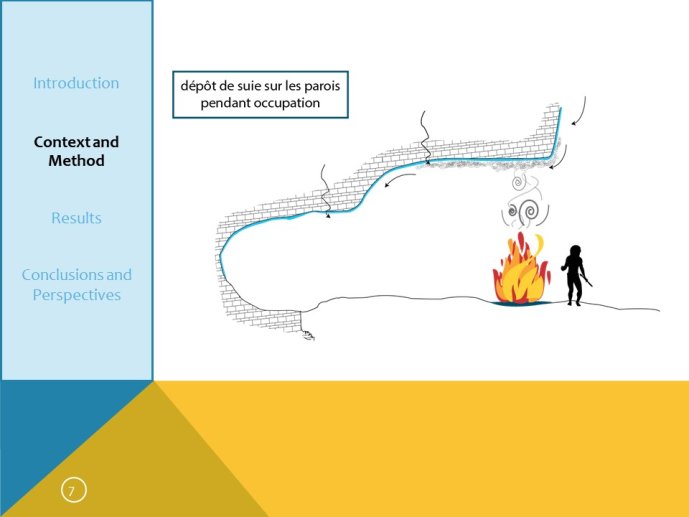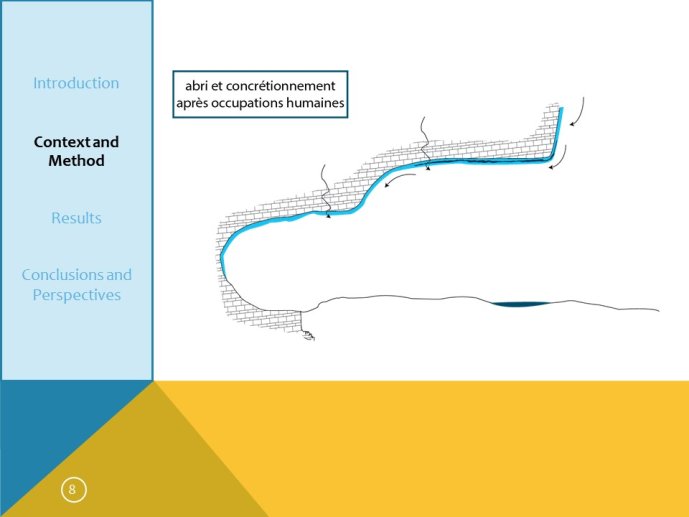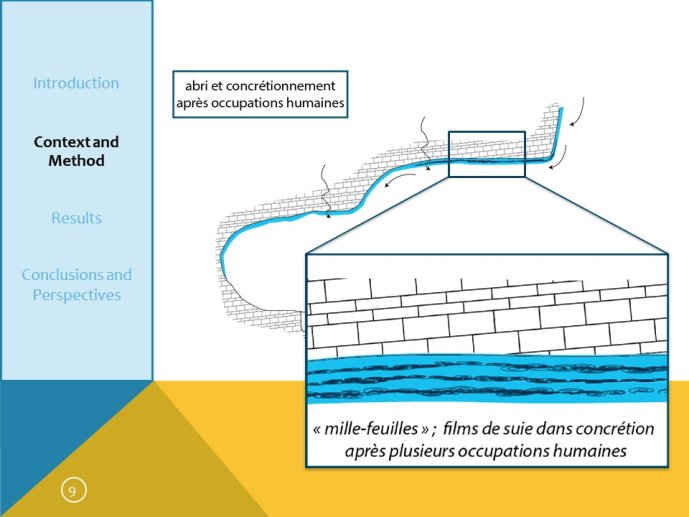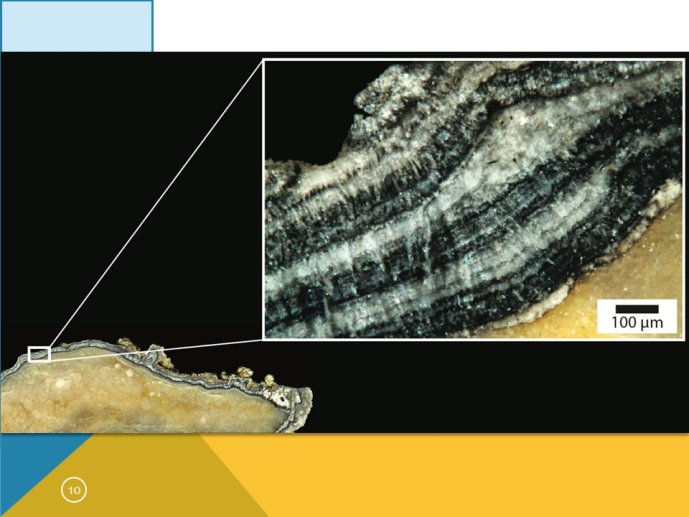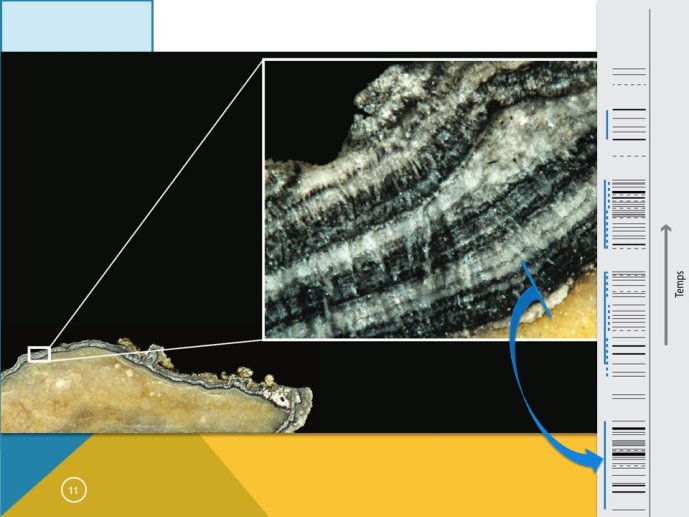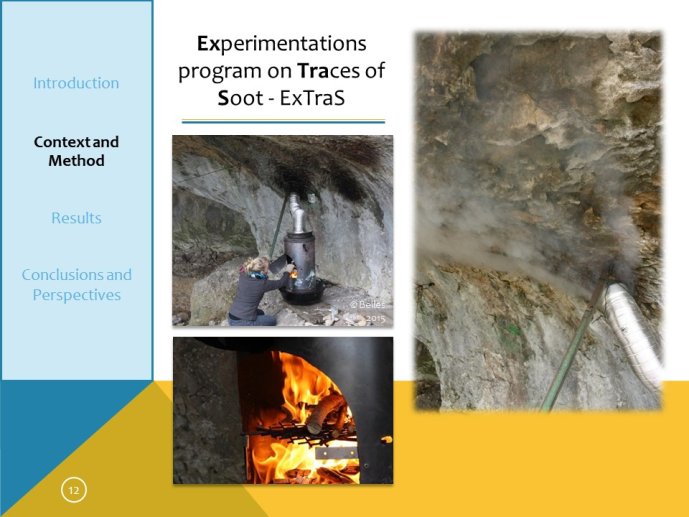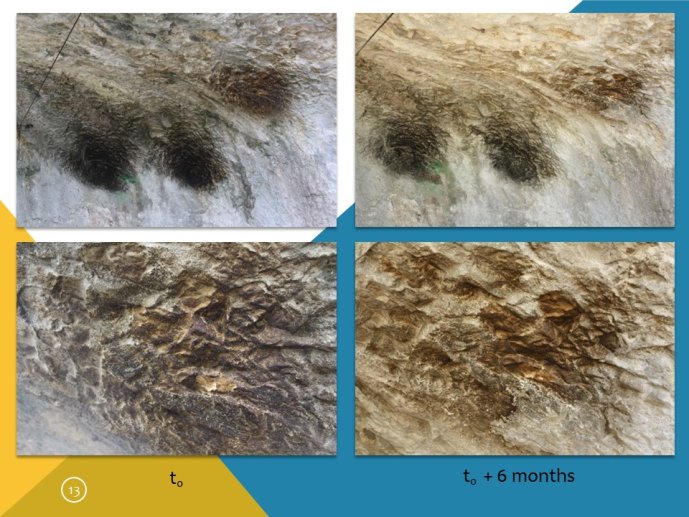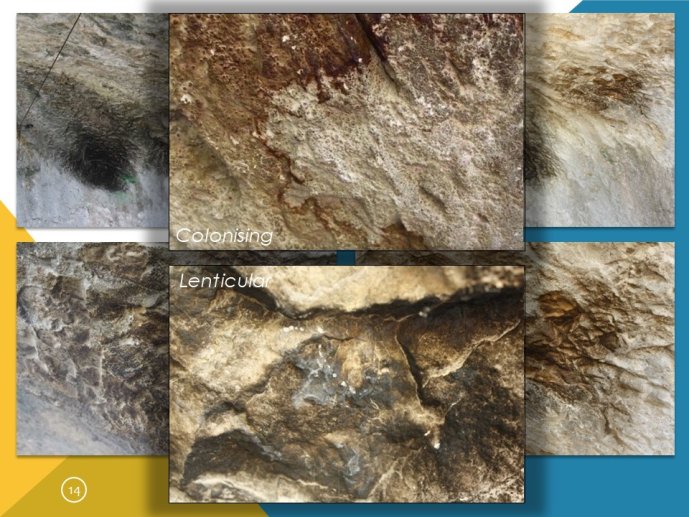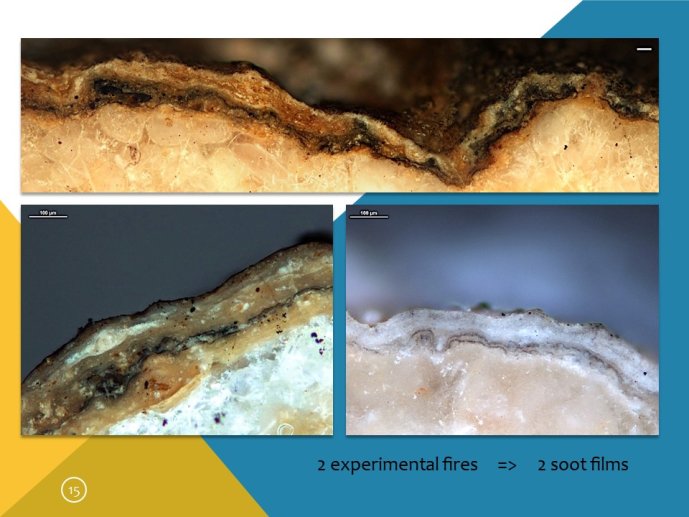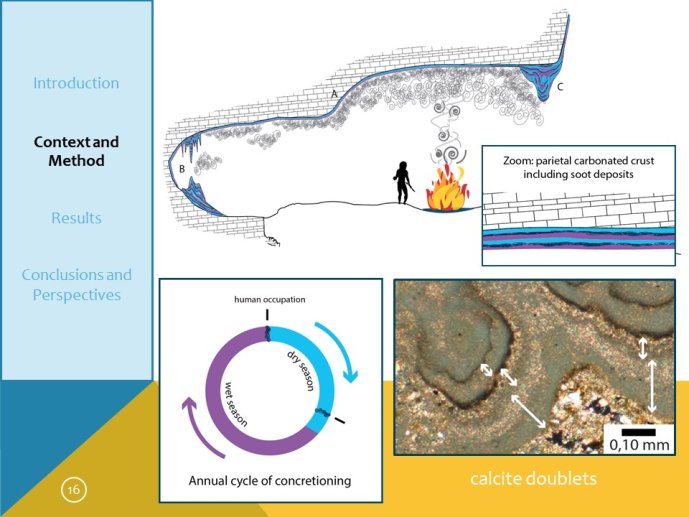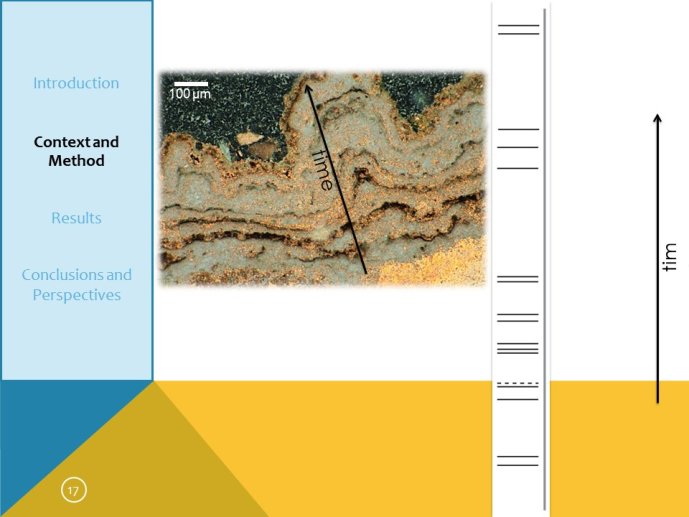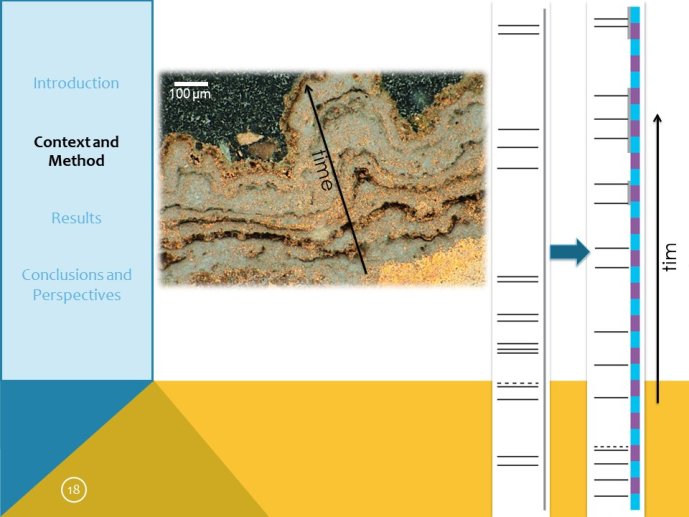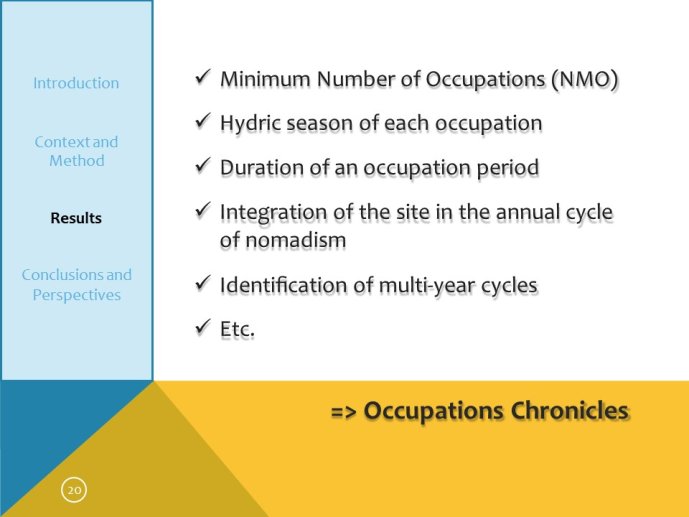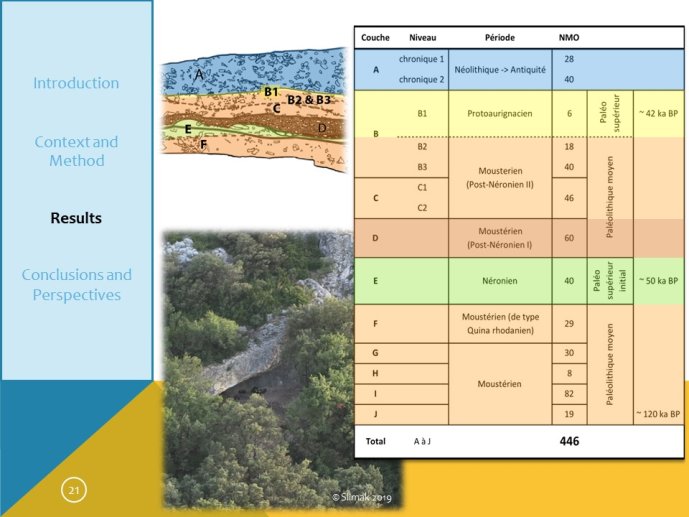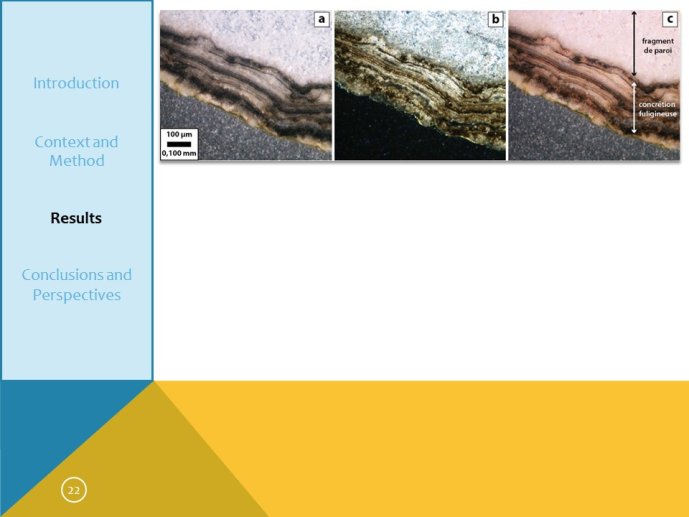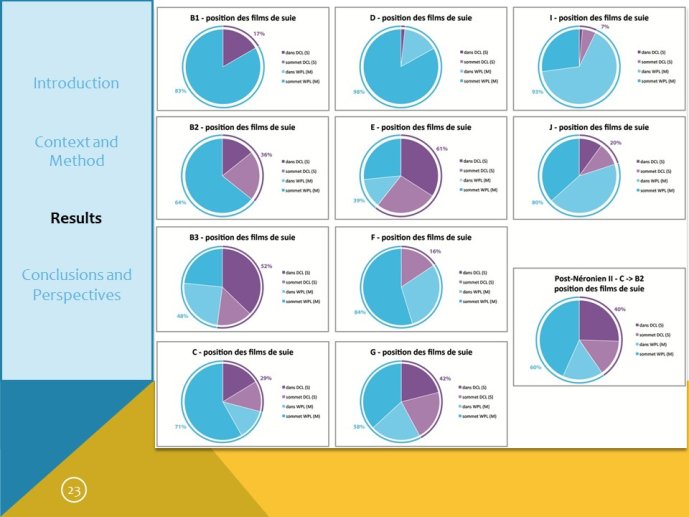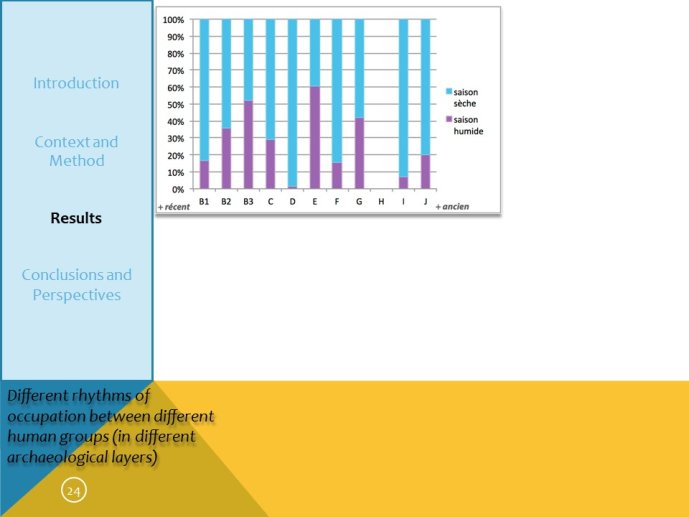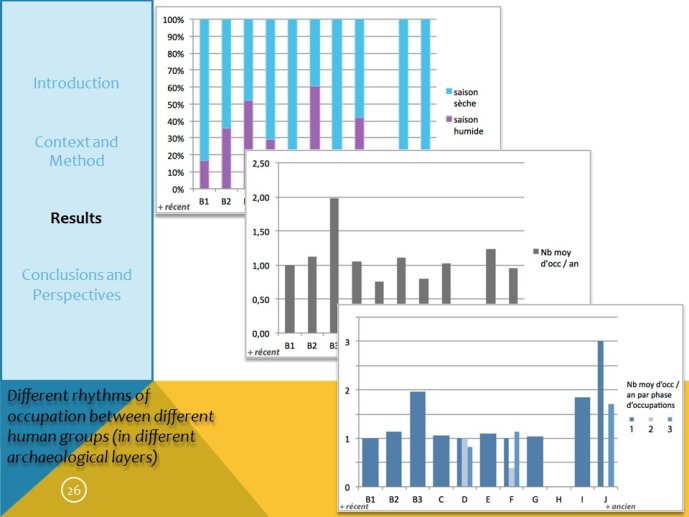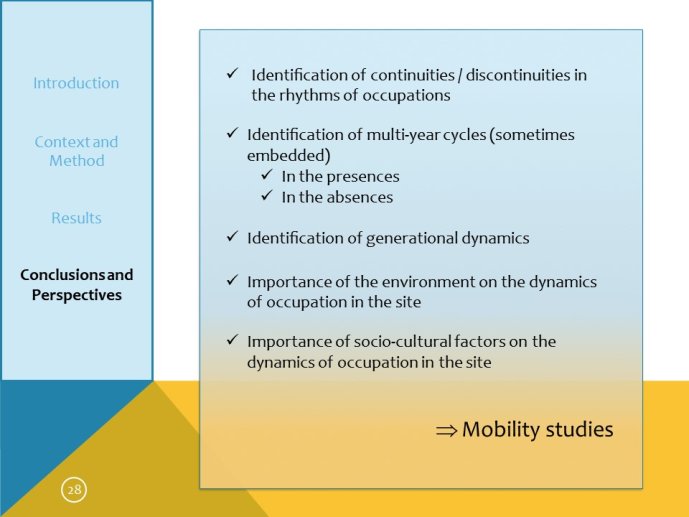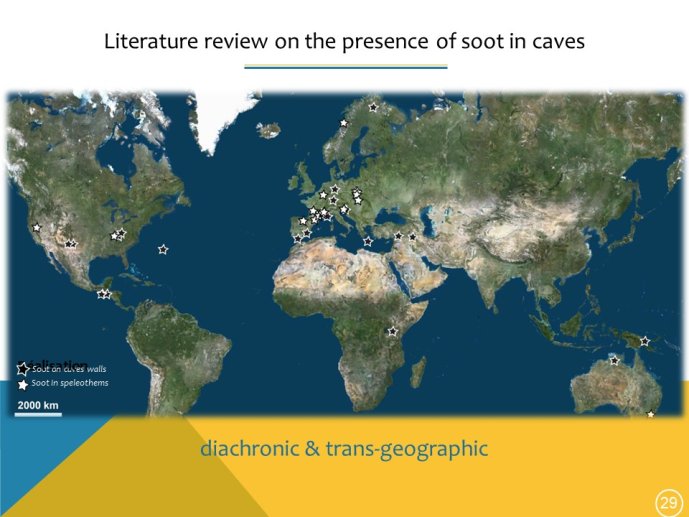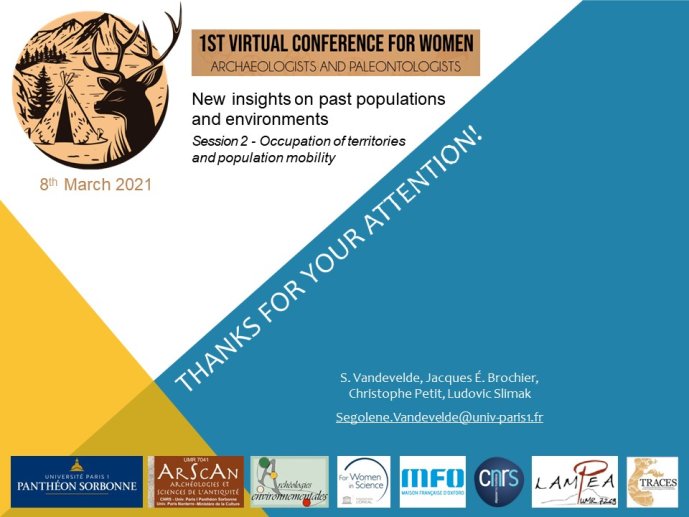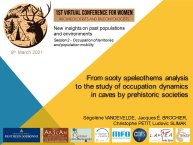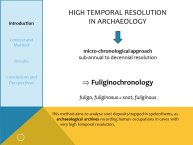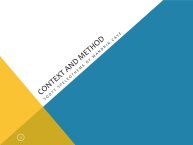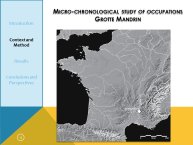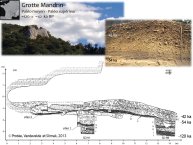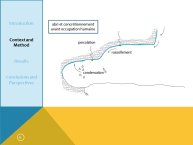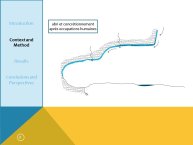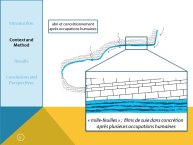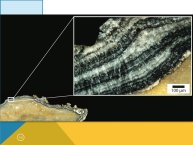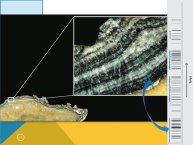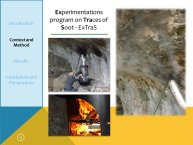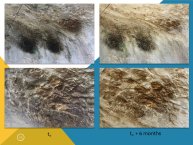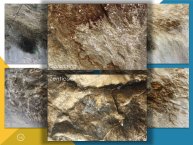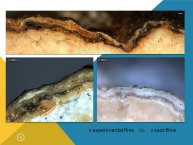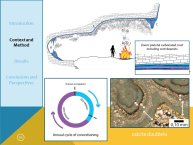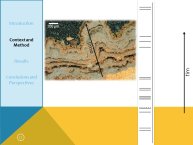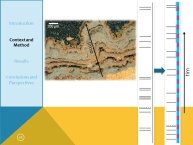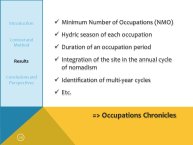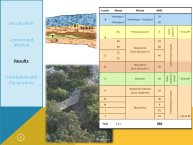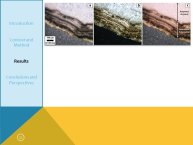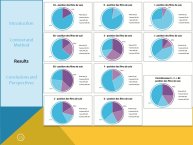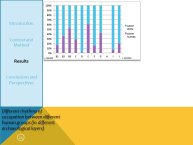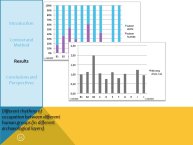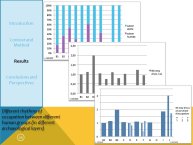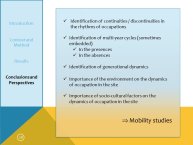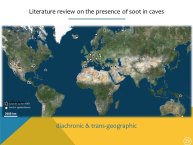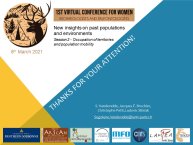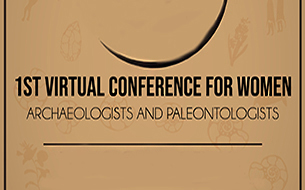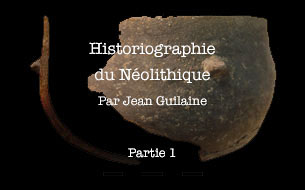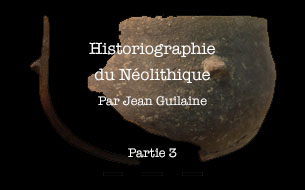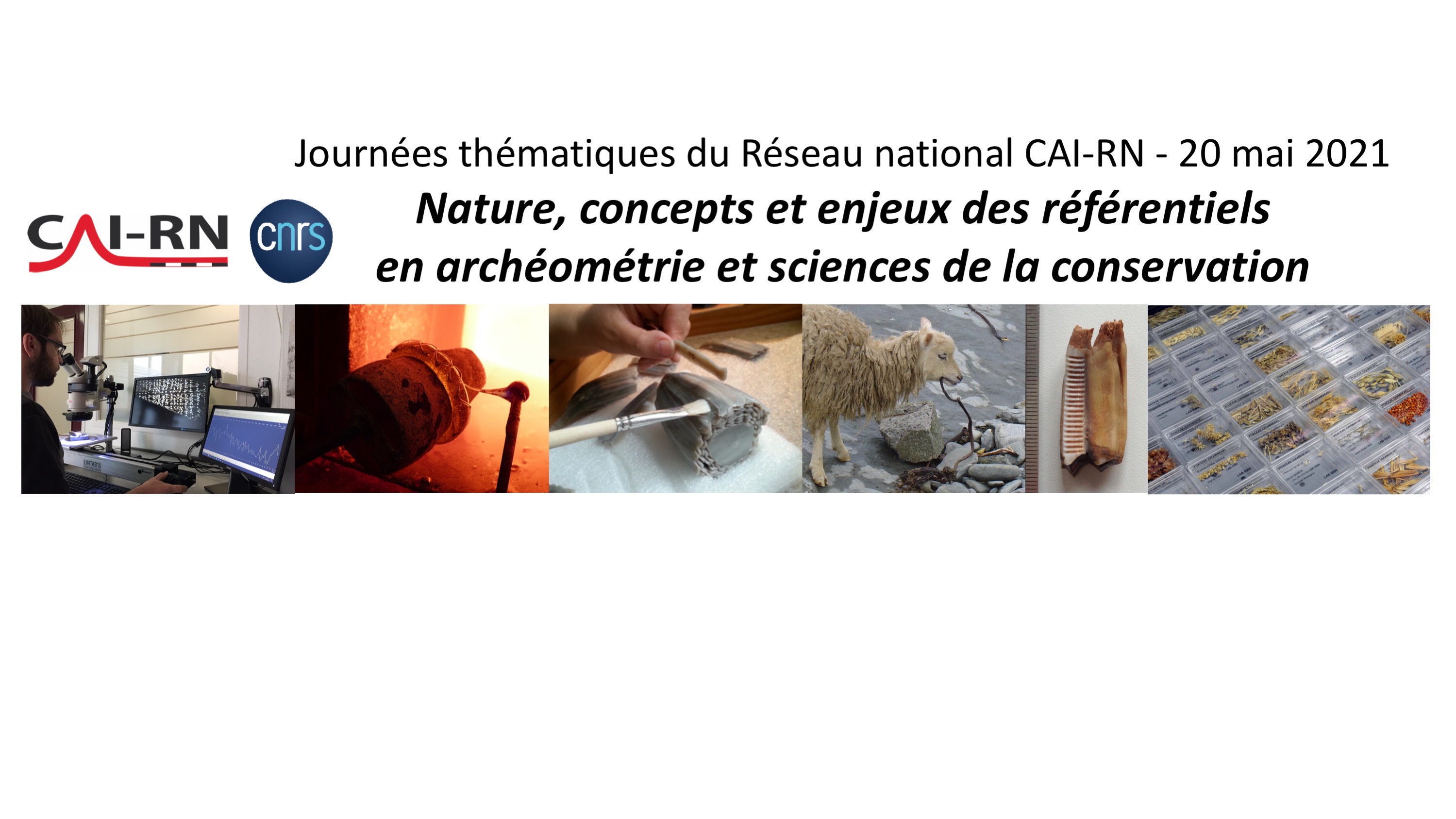Notice
From sooty speleothems analysis to the study of occupation dynamics of caves by prehistoric societies / Ségolène Vandevelde
- document 1 document 2 document 3
- niveau 1 niveau 2 niveau 3
Descriptif
From sooty speleothems analysis to the study of occupation dynamics of caves by prehistoric societies / Ségolène Vandevelde, in colloque "1st Virtual Conference for Women Archaeologists and Paleontologists. Nouveaux apports à l’étude des populations et environnements passés" organisé par le laboratoire Travaux et Recherches Archéologiques sur les Cultures, les Espaces et les Sociétés (TRACES) de l’Université Toulouse Jean Jaurès et le laboratoire Paléontologie Évolution Paléoécosystèmes (PALEVOPRIM) de l'Université de Poitiers, sous la responsabilité scientifique de Julie Bachellerie, Ana Belén Galán López (Traces), Émilie Berlioz et Margot Louail (Palevoprim). Université Toulouse Jean Jaurès, 8-9 mars 2021. Session 2 : Occupation of territories and population mobility. [Conférence enregistrée en distanciel].
Studying past societies requires an understanding of their social organization. One of the entry points is the study of mobility patterns and land use dynamics, which can only be accessed with high temporal resolution. If this micro-chronological resolution (sub-annual to decennial) is accessible to ethnologists, it is generally not accessible to prehistoric archaeologists whose archaeological assemblages are unfortunately almost exclusively cumulative and are mostly formed over a long period of time. In order to reach high temporal resolution in archaeology, the object of my research has been to develop fuliginochronology (from lat. fuligo, fuliginosus: soot, fuliginous), a microchronological study of soot deposits trapped in speleothems, witnesses of human occupation in cavities. This pioneering method thus makes it possible to reconstruct the chronicle of human occupations in cave sites. The joint study of soot films and annual calcite doublets allows the chronicles to be set on a microchronological time scale with subannual resolution. The analysis of this geoarchaeological object thus consists of an anthropological study of past societies, since mobility in its temporal dimension is accessed on the human time scale. To date, few studies have been interested in this material and yet this microchronological method presents a wide field of application both chronological and geographical, since it can be applied anywhere in the world and for any period, as long as fireshave been made near active concretions. During this presentation, the method will be presented as well as the experiments carried out to better understand the formation of these archives of anthropogenic activities that fuliginous speleothems are. The use of thismethod to document the mobility patterns of past societies will also bepresented through case study.
Thème
Documentation
Références documentaires
VANDEVELDE, S., GENTY, D., BROCHIER, J.-É., PETIT, C., SLIMAK, L. (2020). Sooty concretions in archaeological contexts: What informative potential?, Geomorphologie: Relief, Processus, Environnement, 4, vol.26, 241-254. [En ligne : https://doi.org/10.4000/geomorphologie.14981].
VANDEVELDE, Ségolène, BROCHIER, J.-É, PETIT, C., SLIMAK, L. (2017). Establishment of occupation chronicles in Grotte Mandrin using sooted concretions: Rethinking the Middle to Upper Paleolithic transition, Journal of Human Evolution, 112, 70-78. [En ligne : https://halshs.archives-ouvertes.fr/halshs-01610057].
Liens
Programme du colloque "1st Virtual Conference for Women Archaeologists and Paleontologists" (8-9 mars 2021)
Website du Laboratoire Paléontologie Évolution Paléoécosystèmes Paléoprimatologie (PALEVOPRIM)
Livret des résumés des communications du colloque "1st Virtual Conference for Women Archaeologists and Paleontologists. Nouveaux apports à l’étude des populations et environnements passés" (8-9 mars 2021)
Site internet dédié au colloque "1st Virtual Conference for Women Archaeologists and Paleontologists" (8-9 mars 2021)
Dans la même collection
-
Sensivity analysis to morphological changes of the shoulder joint: application to percussio…
Blasi-ToccacceliAliciaSensivity analysis to morphological changes of the shoulder joint: application to percussion gestures during Oldowan debitage / Alicia Blasi-Toccacceli, in colloque "1st Virtual Conference for
-
"Ouranopithecus macedoniensis" (late Miocene, Greece): analysis of mandibular fragments using …
IoannidouMelaniaOuranopithecus macedoniensis (late Miocene, Greece): analysis of mandibular fragments using 3D geometric morphometrics / Melania Ioannidou, in colloque "1st Virtual Conference for Women
-
Comminution capabilities of extant and fossil anthropoids during molar intercuspation: a preliminar…
WalkerAxelle E. C.Comminution capabilities of extant and fossil anthropoids during molar intercuspation: a preliminary experiment using a chewing simulator / Axelle E. C. Walker, in colloque "1st Virtual Conference for
-
New sperm whale cranium from the late Miocene and a revised family attribution for the small crown …
AlfsenApollineNew sperm whale cranium from the late Miocene and a revised family attribution for the small crown physeteroid Thalassocetus / Apolline Alfsen, in colloque "1st Virtual Conference for Women
-
What is shaping the brain? A perspective on brain size evolution in carnivorans / Margot…
MichaudMargotWhat is shaping the brain? A perspective on brain size evolution in carnivorans / Margot Michaud, in colloque "1st Virtual Conference for Women Archaeologists and Paleontologists. Nouveaux
-
Postnatal shape changes in the rodent mandible at a macroevolutionary scale / Morgane Dubied
DubiedMorganePostnatal shape changes in the rodent mandible at a macroevolutionary scale / Morgane Dubied, in colloque "1st Virtual Conference for Women Archaeologists and Paleontologists. Nouveaux apports à l
-
Cranial vault healing in modern humans: input of archaeological and clinical data / Aliéno…
LepetitAliénorCranial vault healing in modern humans: input of archaeological and clinical data / Aliénor Lepetit, in colloque "1st Virtual Conference for Women Archaeologists and Paleontologists. Nouveaux
-
A transdisciplinary approach to reconstruct the Nilotic socio-ecosystem in Luxor west bank during t…
NicatoreGiuliaA transdisciplinary approach to reconstruct the Nilotic socio-ecosystem in Luxor west bank during the Ptolemaic period (3rd-1st centuries BC.) / Giulia Nicatore, in colloque "1st Virtual Conference
-
From monoliths to megaliths: a new approach on the megalithic burials of southwestern France / Bosc…
BoscusSarahFrom monoliths to megaliths: a new approach on the megalithic burials of southwestern France / Boscus Sarah, in colloque "1st Virtual Conference for Women Archaeologists and Paleontologists. Nouveaux
-
Tracing Human Ancestral Migration from its Symbiotic Bacteria / Alexia Nguyen Trung
Nguyen TrungAlexiaTracing Human Ancestral Migration from its Symbiotic Bacteria / Alexia Nguyen Trung, in colloque "1st Virtual Conference for Women Archaeologists and Paleontologists. Nouveaux apports à l’étude des
-
Foragers and their symbolic landscape. Understanding the role of rock art in the territoriality of …
JobardLéaForagers and their symbolic landscape. Understanding the role of rock art in the territoriality of Later Stone Age Matobo populations / Léa Jobard, in colloque "1st Virtual Conference for Women
-
Towards a tracking of past bird seasonal migrations through geological times: what could isotopes t…
DuhamelAnaïsTowards a tracking of past bird seasonal migrations through geological times: what could isotopes tell us? / Anaïs Duhamel, in colloque "1st Virtual Conference for Women Archaeologists and
Sur le même thème
-
Historiographie du Néolithique. 1 / Jean Guilaine
GuilaineJeanCe séminaire relate la mutation de la recherche préhistorique au cours des quatre dernières décennies, et plus précisément l’histoire de la recherche néolithique française qui est celle d’une
-
Historiographie du Néolithique. 3 / Jean Guilaine
GuilaineJeanHistoriographie du Néolithique. 3 / Jean Guilaine, in "Derniers chasseurs-cueilleurs et premiers paysans : la fin de la Préhistoire en Europe", webdocumentaire réalisé dans le cadre des appels à
-
E. HERRSCHER et L. MION, Référentiels isotopiques et paléoalimentation humaine : un doux rêve arché…
Référentiels isotopiques et paléoalimentation humaine : un doux rêve archéologique ? Estelle Herrscher et Leïa Mion Aix Marseille Université, CNRS, Ministère de la Culture, LAMPEA, Aix-en
-
E.-M. GEIGL, L’importance des référentiels en paléogénomique
Eva-Maria GEIGL(1), L’importance des référentiels en paléogénomique (1) Université de Paris, CNRS, Institut Jacques Monod L’analyse des génomes anciens préservés dans les vestiges biologiques apporte
-
Sensivity analysis to morphological changes of the shoulder joint: application to percussio…
Blasi-ToccacceliAliciaSensivity analysis to morphological changes of the shoulder joint: application to percussion gestures during Oldowan debitage / Alicia Blasi-Toccacceli, in colloque "1st Virtual Conference for
-
"Ouranopithecus macedoniensis" (late Miocene, Greece): analysis of mandibular fragments using …
IoannidouMelaniaOuranopithecus macedoniensis (late Miocene, Greece): analysis of mandibular fragments using 3D geometric morphometrics / Melania Ioannidou, in colloque "1st Virtual Conference for Women
-
Cranial vault healing in modern humans: input of archaeological and clinical data / Aliéno…
LepetitAliénorCranial vault healing in modern humans: input of archaeological and clinical data / Aliénor Lepetit, in colloque "1st Virtual Conference for Women Archaeologists and Paleontologists. Nouveaux
-
Tracing Human Ancestral Migration from its Symbiotic Bacteria / Alexia Nguyen Trung
Nguyen TrungAlexiaTracing Human Ancestral Migration from its Symbiotic Bacteria / Alexia Nguyen Trung, in colloque "1st Virtual Conference for Women Archaeologists and Paleontologists. Nouveaux apports à l’étude des
-
From monoliths to megaliths: a new approach on the megalithic burials of southwestern France / Bosc…
BoscusSarahFrom monoliths to megaliths: a new approach on the megalithic burials of southwestern France / Boscus Sarah, in colloque "1st Virtual Conference for Women Archaeologists and Paleontologists. Nouveaux
-
Study of human group behaviors during the Last Glacial Maximum in the east Carpathian area from zoo…
DemayLaëtitiaStudy of human group behaviors during the Last Glacial Maximum in the east Carpathian area from zooarchaeological remains / Laëticia Demay, in colloque "1st Virtual Conference for Women Archaeologists
-
An analysis of Iron Age Scottish wetland deposition practices /Tiffany Treadway
TreadwayTiffanyAn analysis of Iron Age Scottish wetland deposition practices / Tiffany Treadway, in colloque "1st Virtual Conference for Women Archaeologists and Paleontologists. Nouveaux apports à l’étude des
-
Gender Trouble: towards a deconstruction of binarity in archaeology / Laura Mary
MaryLauraGender Trouble: towards a deconstruction of binarity in archaeology / Laura Mary, in colloque "1st Virtual Conference for Women Archaeologists and Paleontologists. Nouveaux apports à l’étude des

